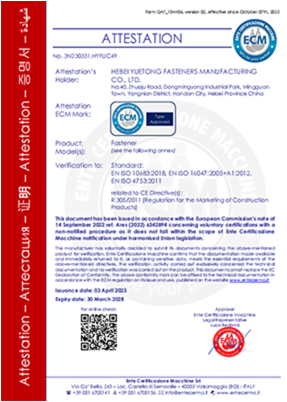Lis . 30, 2024 19:11 Back to list
Exploring the Fundamentals and Applications of the Clamp Operation in Digital Processing
Understanding Clamp Operations A Comprehensive Overview
Clamp operations are a critical concept used across various fields, from computer graphics and digital signal processing to data analysis and control systems. The primary function of a clamp operation is to restrict a value within a specified range, effectively ensuring that outputs do not exceed predefined limits. In this article, we’ll explore the nature of clamp operations, their applications, advantages, and examples of how they are implemented in different contexts.
What is a Clamp Operation?
At its core, a clamp operation takes an input value and limits it to a defined minimum and maximum range. Mathematically, this can be expressed as follows
\[ \text{clamp}(x, \text{min}, \text{max}) = \begin{cases} \text{min} & \text{if } x < \text{min} \\ x & \text{if } \text{min} \leq x \leq \text{max} \\ \text{max} & \text{if } x > \text{max} \end{cases} \]
This simple yet powerful operation serves numerous purposes, ranging from enhancing stability in numerical simulations to ensuring compliance with physical constraints in engineering designs.
Applications of Clamp Operations
1. Computer Graphics In rendering images and animations, clamp operations are frequently employed to manage color values. For instance, colors in the RGB color model are typically represented within a range of 0 to 255. If a computed value exceeds this range, the clamp operation ensures that it is brought back within the limits, preventing color overflow that could distort an image.
2. Digital Signal Processing (DSP) In signal processing, maintaining signal amplitudes within a specific range is essential to avoid distortion. When processing audio or visual signals, values are clamped to prevent clipping—an undesirable effect that occurs when signal levels exceed the maximum allowable range.
3. Game Development Clamp operations are utilized within game physics to keep object positions and velocities within the game world. This is particularly important for preventing characters or objects from moving outside the designated play area, enhancing user experience and gameplay fidelity.
4. Control Systems In various automated systems, control loops need to adhere to certain thresholds. Clamp operations play a vital role in setting limits on outputs, such as motor speeds or valve positions, ensuring that they remain within operational safety limits while responding to real-time input changes.
Advantages of Using Clamp Operations
The implementation of clamp operations offers several advantages
clamp operation

- Error Prevention By constraining values to a specified range, clamp operations significantly reduce the likelihood of errors resulting from out-of-bounds values. - Enhancing Stability In numerical applications, clamping helps maintain stability. Overflows and underflows can lead to major computational errors, and clamping mitigates such risks.
- Improved Aesthetics In graphics rendering, clamping color values ensures that the resulting images maintain visual consistency and avoid unrealistic colors or artifacts.
Examples of Clamp Operation Implementation
Consider an example in a programming context using a simple function to clamp values
```python def clamp(value, min_value, max_value) return max(min_value, min(value, max_value))
Example usage clamped_value = clamp(300, 0, 255) Result 255 ```
In this code snippet, a function is defined to clamp any input value between 0 and 255. If the value exceeds this range, it is adjusted accordingly.
Another example can be found in game development, where character health points are often clamped
```python def update_health(current_health, damage) new_health = current_health - damage return clamp(new_health, 0, 100) Health should not go below 0 or above 100 ```
In this scenario, the health of a character is updated based on damage taken while ensuring that it remains within a valid range.
Conclusion
Clamp operations are invaluable tools in computational techniques, providing safeguards against unexpected outputs and maintaining the integrity of data in various applications. Understanding and applying clamp operations is essential for developers, engineers, and designers alike, as they help in delivering robust and reliable systems across numerous industries. By ensuring that values remain confined within their desired boundaries, clamp operations contribute significantly to the stability and functionality of modern technology.


